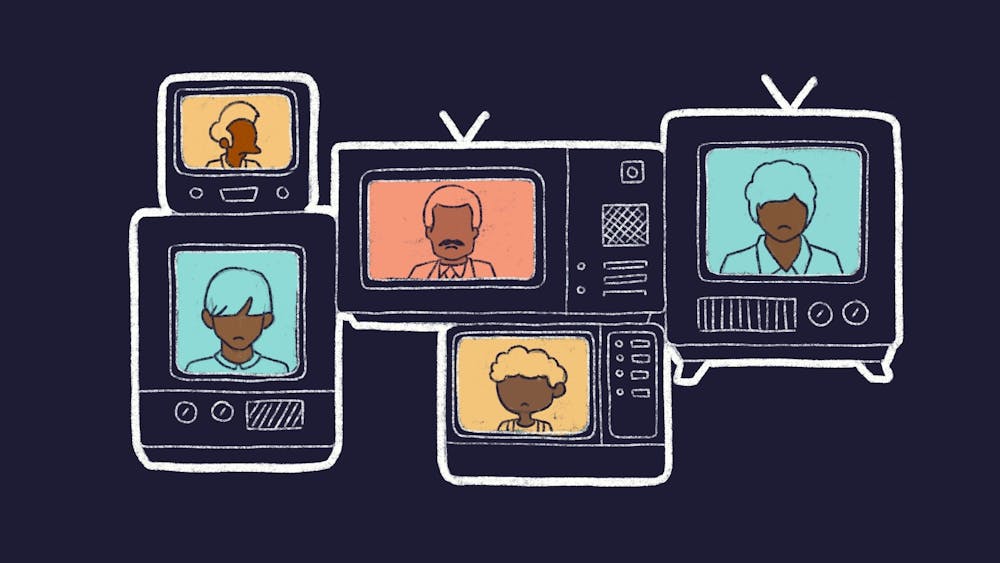It has always been easy for Western media audiences to see Cleopatra and Princess Jasmine through a white artist, but it is somehow harder for them to visualize Julius Caesar or Ariel through a Brown artist.
There's a deep lack of representation that permeates throughout Western television shows and movies that has been pacified and overlooked by audiences and directors alike.
It becomes clear when you compare the diversity of the audience filling the seats to the blanket of actors on stage or on screen: The industry that requires the strongest connection to their consumers does not represent us at all.
As an actress, I've stood next to four or five of my white colleagues as directors sized us up, arguing about which one of us looked more "realistic" for complex major roles.
I've had assistant directors tell me that I would've been perfect for the role if I were not an Indian woman, or that they split the cast so they could "balance the diversity." I’ve been in productions of Aladdin where the prince alongside me was a white actor, and I watched as the few roles for South Asian women were given to white actresses. And I'm not the only one.
Stereotyping South Asians is widely present within Hollywood media, from the Simpsons to Disney Channel. This reduction of South Asians to unattractive and socially awkward characters is terrifyingly normalized. Growing up, characters that looked like me or my family in TV shows were few and far between, and every single one of those characters fell into those stereotypes.
Watching the “Baljeets” of the television world, nerdy and weak, consistently being depicted as less worthy than the white main characters, Phineas and Ferb, instills in Brown children that they are lesser than their white peers. We are force-fed these ideas through the token Brown person in every children’s show, slowly grating away at our self worth as the years pass. Our peers begin to define us by the Brown characters they see on their favorite TV shows, and we start to believe that's all we can be.
White actors have the opportunities to explore many deep and complex characters while Brown actors are consistently only offered supporting roles.
While it is necessary for shows to have comedic characters, the issue arises when almost every Brown character falls into Western stereotypes while white characters are upheld as attractive protagonists. Brown people are consistently used as contrasting side characters that emphasize the “normal” white characters. Casting and writing must improve — comedy should not be at the expense of minorities.
Comedy that relies on stereotyping is not “dark humor,” it’s just weak.
In an InStyle article, Quantico Actress Priyanka Chopra recounted a time when a casting director insisted that she was the wrong “physicality” for a role — a statement she didn’t understand until her agent explained that the director didn’t want a Brown actress.
Sunnyside Actor Kal Penn tweeted about incredibly offensive roles he had been offered, from a "Gandhi Lookalike" to a "Snake Charmer." He explained how directors would often ask for him to do a more "authentic" Indian accent — even though Hollywood's stereotypical Indian accent isn’t what Indian people actually sound like.
Western representation of the stereotypical “Indian” accent has consistently baffled me. Most Indian people are educated in British English, since the British landed in India in 1608 and officially colonized the country almost 200 years ago. Naturally, then, many Indian people also have retained an accent very similar to those of the Brits. So where did this stumbling, over-pronounced version of the “Indian accent” come from?
European accents are viewed by society as attractive and "classy," while immigrant accents such as those of South Asians or Latinos are perceived as lower class and uneducated. Immigrant accents are equated with undesirability. Emphasizing the differences between Indian accents and those of the American and Europeans within a show serves to create a stark contrast between the Brown characters and the white leads.
When a somewhat complex and non-stereotypical role is written for a Brown character, there are countless times when the character is casted as light skinned or white. I’ve seen off and on-Broadway versions of Aladdin where Princess Jasmine is played by a white actress with a tan, and the same thing happens in Disneyland and in local princess party event places.
Aladdin is the closest Disney has come to true South Asian representation, with Princess Jasmine adding to the five princesses that are not white out of 12 total, yet both Aladdin and Jasmine are constantly being played by white actors.
South Asian countries have the highest population densities in the world, so there is clearly no lack of South Asian people for casting directors to choose from. Yet when a South Asian actor or actress auditions for “white” roles where the ethnicity has nothing to do with the plot, our “physicality” does not “fit the role.”
Colorblind casting should not be an excuse to cast white actors in Brown roles or light-skinned actresses in stories about dark-skinned princesses or leaders. Colorblind casting was created in an attempt to rebalance opportunities and provide the equal chance for minority performers to audition for just as many leading roles as their white counterparts.
The media has the ability to both lend itself to social change or perpetuate prejudice, so it is up to us to demand proper representation.
Reach the reporter at vaishalini@asu.edu and follow @thevaishalini on Twitter.
Like The State Press on Facebook and follow @statepress on Twitter.




